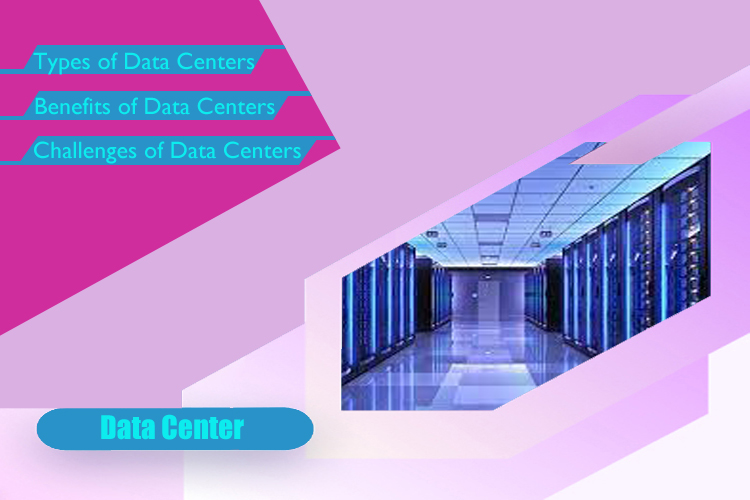Data Center: Types, Benefits and Challenges
1. Introduction
In today's digital age, the demand for data storage, processing, and management has significantly increased. This has led to the rise of data centers as essential infrastructure for organizations of all sizes. In this article, we will explore the different types of data centers, their benefits, and the challenges they face.

2. What is a Data Center?
A data center is a physical facility or a dedicated space within a facility that houses computer systems, servers, networking equipment, and storage systems. It serves as a central repository for storing, managing, and disseminating data and applications. Data centers are designed to provide a secure and controlled environment for the efficient operation of IT infrastructure.
3. Types of Data Centers
3.1 On-Premises Data Centers
On-premises data centers are built and maintained by organizations within their own premises. These data centers are located within the organization's physical facilities, providing direct control over the infrastructure and data. They require significant upfront investments in equipment, infrastructure, and skilled personnel.
3.2 Colocation Data Centers
Colocation data centers are facilities owned and managed by third-party providers. In a colocation model, organizations rent space, power, and cooling infrastructure within the data center facility. This allows them to focus on their core business operations while relying on the expertise and infrastructure of the colocation provider.
3.3 Cloud Data Centers
Cloud data centers are virtualized data centers that provide computing resources and services over the internet. These data centers are operated and managed by cloud service providers. Organizations can leverage cloud data centers to scale their IT infrastructure based on their needs, without the need for significant upfront investments.
4. Benefits of Data Centers
4.1 Increased Security
Data centers offer enhanced security measures to protect sensitive information. They implement physical security controls, such as access control systems, surveillance cameras, and 24/7 security personnel. Additionally, data centers employ robust cybersecurity measures to safeguard data from unauthorized access, data breaches, and other threats.
4.2 Scalability and Flexibility
Data centers provide organizations with the ability to scale their IT infrastructure as their business needs evolve. They offer flexible options to add or remove computing resources, storage capacity, and network bandwidth. This scalability ensures that organizations can efficiently accommodate growth and adapt to changing business requirements.
4.3 Cost Efficiency
By utilizing data centers, organizations can achieve cost efficiencies. On-premises data centers require significant investments in infrastructure, maintenance, and skilled personnel. Colocation and cloud data centers eliminate the need for upfront capital expenditures, allowing organizations to pay for the resources they use on a consumption basis.
4.4 Redundancy and High Availability
Data centers are designed with redundancy in mind to ensure high availability of services. They employ multiple layers of redundancy for power, networking, and storage systems. This minimizes the risk of service disruptions and ensures continuous operations, even in the event of hardware failures or maintenance activities.
5. Challenges of Data Centers
5.1 Energy Consumption and Environmental Impact
Data centers consume a significant amount of energy, contributing to their environmental impact. The high power requirements for running servers, cooling systems, and other equipment result in increased carbon emissions. Data centers are striving to adopt energy-efficient technologies and practices to reduce their environmental footprint.
5.2 Cooling and Heat Management
Efficient cooling is crucial for maintaining the optimal operating temperature within data centers. The heat generated by servers and other equipment needs to be effectively managed to prevent overheating and equipment failures. Data centers employ various cooling techniques, such as air conditioning systems, liquid cooling, and hot/cold aisle containment, to maintain a suitable temperature.
5.3 Maintenance and Upgrades
Data centers require regular maintenance and upgrades to ensure optimal performance and reliability. This includes hardware replacement, firmware updates, software patches, and equipment testing. Planned maintenance activities should be carefully scheduled to minimize service disruptions and downtime.
5.4 Security and Data Breaches
Data centers face constant security challenges, including the risk of data breaches and cyberattacks. It is crucial for data centers to implement robust security measures, such as firewalls, intrusion detection systems, encryption, and access controls. Regular security audits and vulnerability assessments are essential to identify and mitigate potential risks.
6. Conclusion
Data centers play a vital role in modern business operations, providing secure and scalable infrastructure for data storage and processing. Whether it's an on-premises, colocation, or cloud data center, organizations can benefit from increased security, scalability, cost efficiency, and high availability. However, data centers also face challenges related to energy consumption, cooling, maintenance, and security. It is important for organizations and data center operators to address these challenges and adopt sustainable practices to ensure the efficient and reliable operation of data centers.
FAQs
Q1.What is a data center?
A data center is a physical facility or dedicated space that houses computer systems, servers, and storage systems for data storage and management.
Q2.What are the types of data centers?
There are three main types of data centers: on-premises data centers, colocation data centers, and cloud data centers.
Q3.What are the benefits of data centers?
Data centers offer increased security, scalability, cost efficiency, and high availability of services.
Q4.What are the challenges faced by data centers?
Data centers face challenges related to energy consumption, cooling, maintenance, and security.
Q5.How can organizations address the challenges of data centers?
Organizations can adopt energy-efficient technologies, implement effective cooling systems, perform regular maintenance and upgrades, and implement robust security measures to address the challenges of data centers. 
 The Future of Fiber Optic Communication Network Architecture: Evolution and the Role of SDON Technology
The Future of Fiber Optic Communication Network Architecture: Evolution and the Role of SDON Technology
 What opportunities and challenges does free-space optical communication technology face?
What opportunities and challenges does free-space optical communication technology face?
 Opelink MPO Products for High-Speed Data Center Applications
Opelink MPO Products for High-Speed Data Center Applications
 CWDM vs. DWDM: Which Optical Transmission Technology Should You Choose?
CWDM vs. DWDM: Which Optical Transmission Technology Should You Choose?